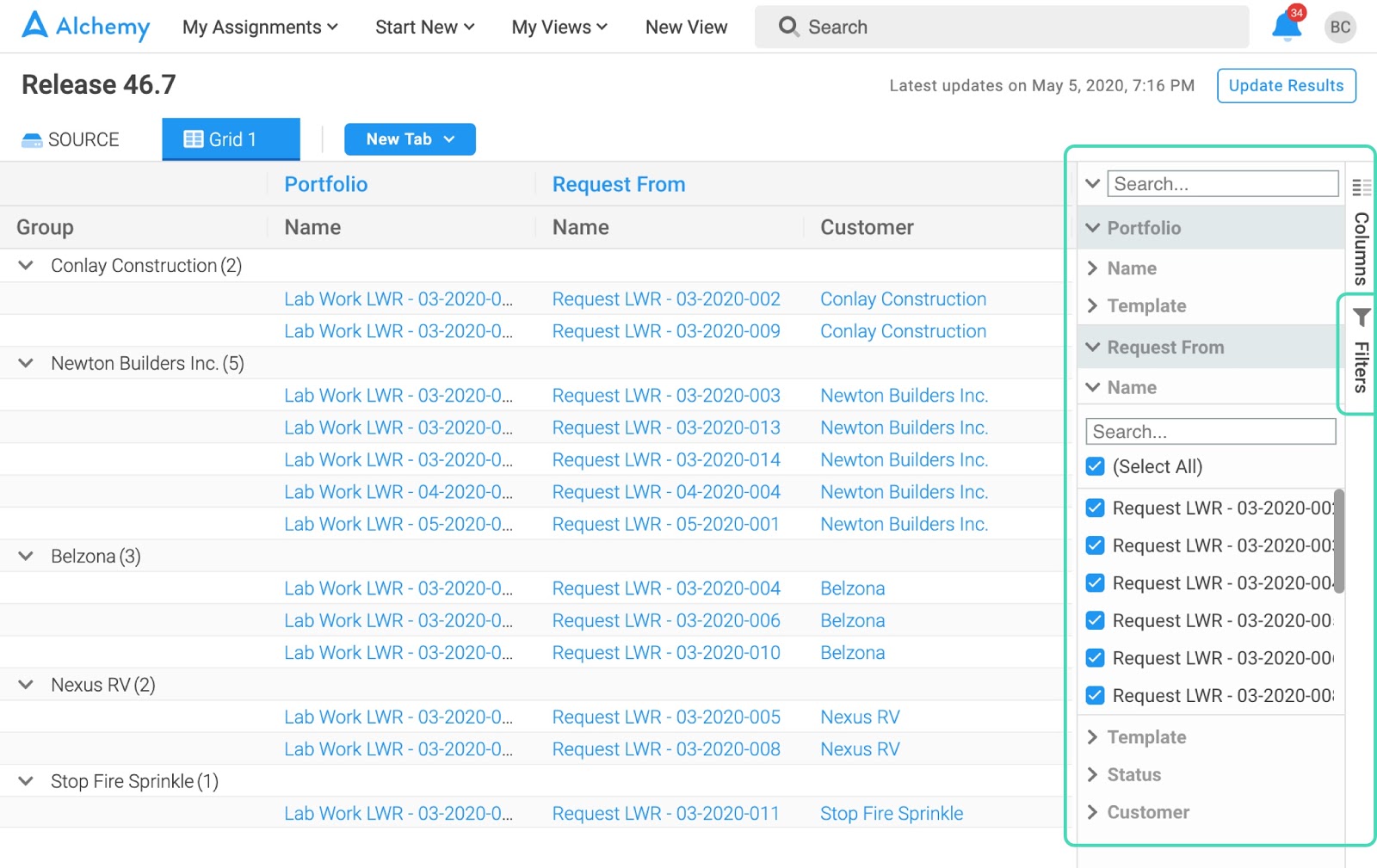New Features
1. Rich Text Resize
2. New Project Planning Labels
3. Links in Views
4. Filters in Views
1. Rich Text Resize
Users are now able to adjust the height of rich text fields (i.e., formatted writing areas) in Alchemy records. Additionally, the rich text field toolbar has been moved outside of the writing area to expand the space for writing. Once a user “activates” a rich text field by clicking inside it, a rich text field can be formatted and include links or an image in the rich text box. This rich text feature enables you to adjust the height of the box to accommodate however much information you need to include.
By contrast, simple alphanumeric fields have a 3000 character limit and no formatting or resizing potential.
Key End User Benefits
Users can set their desired writing area height for each rich text field in a record to make sure the entire text is visible in the record without scrolling on screen and and on printouts.
This will make records with rich text fields much more useful as they will now be more readable and visually appealing.
Rich Text
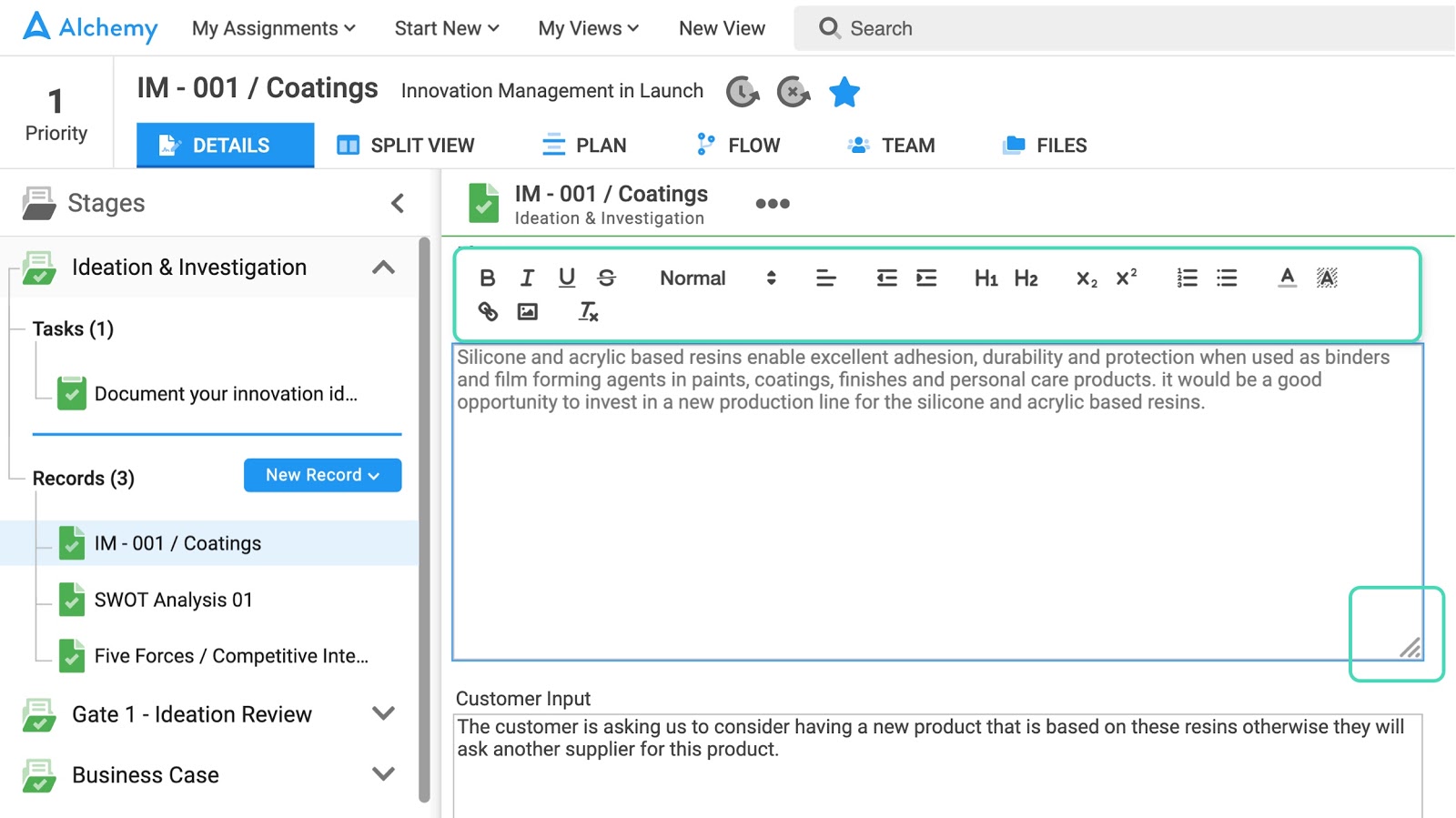
Alphanumeric
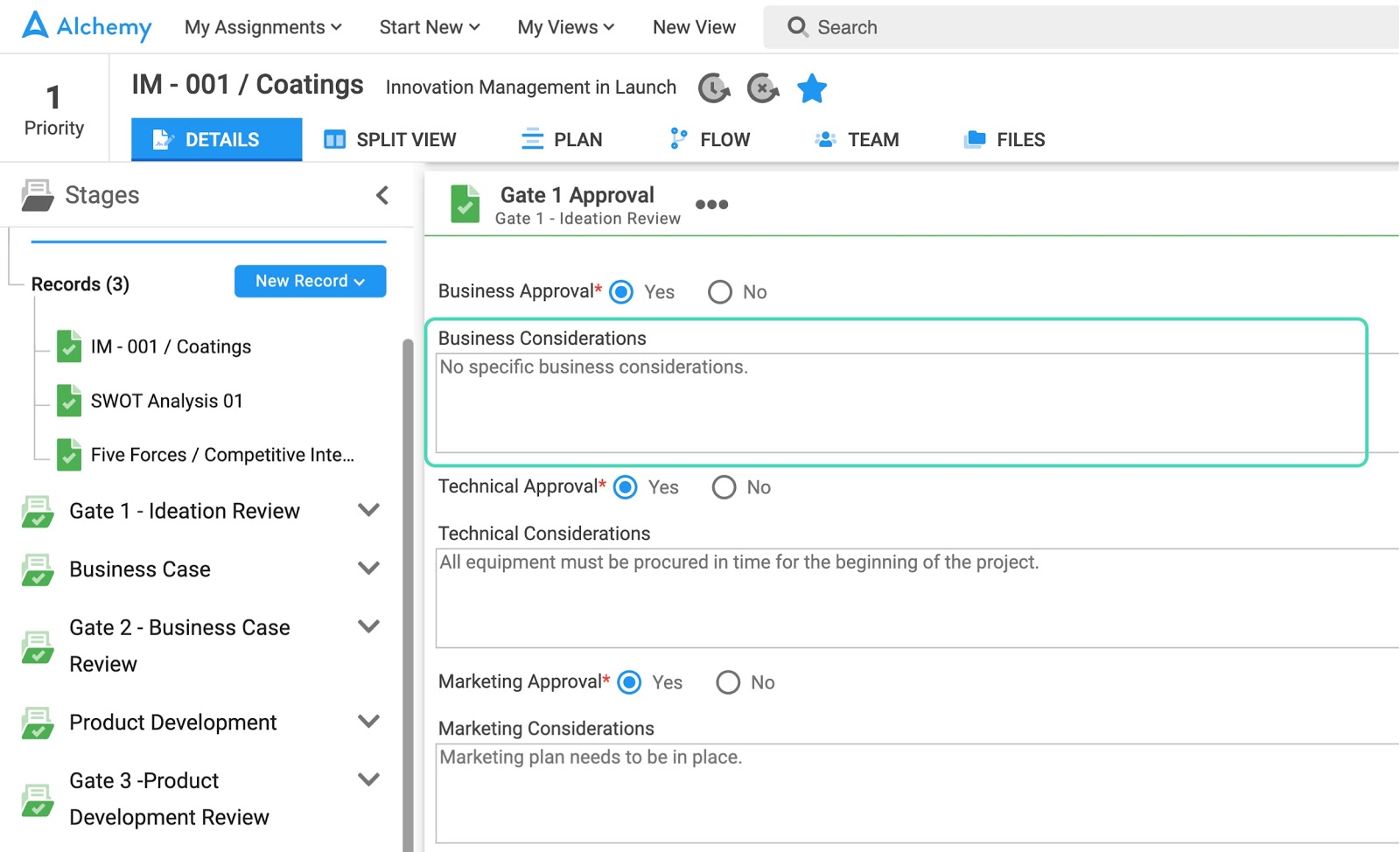
Before/After
Before, you could not adjust the size and occasionally the box would be too small to display and print 100% of the content contained within.
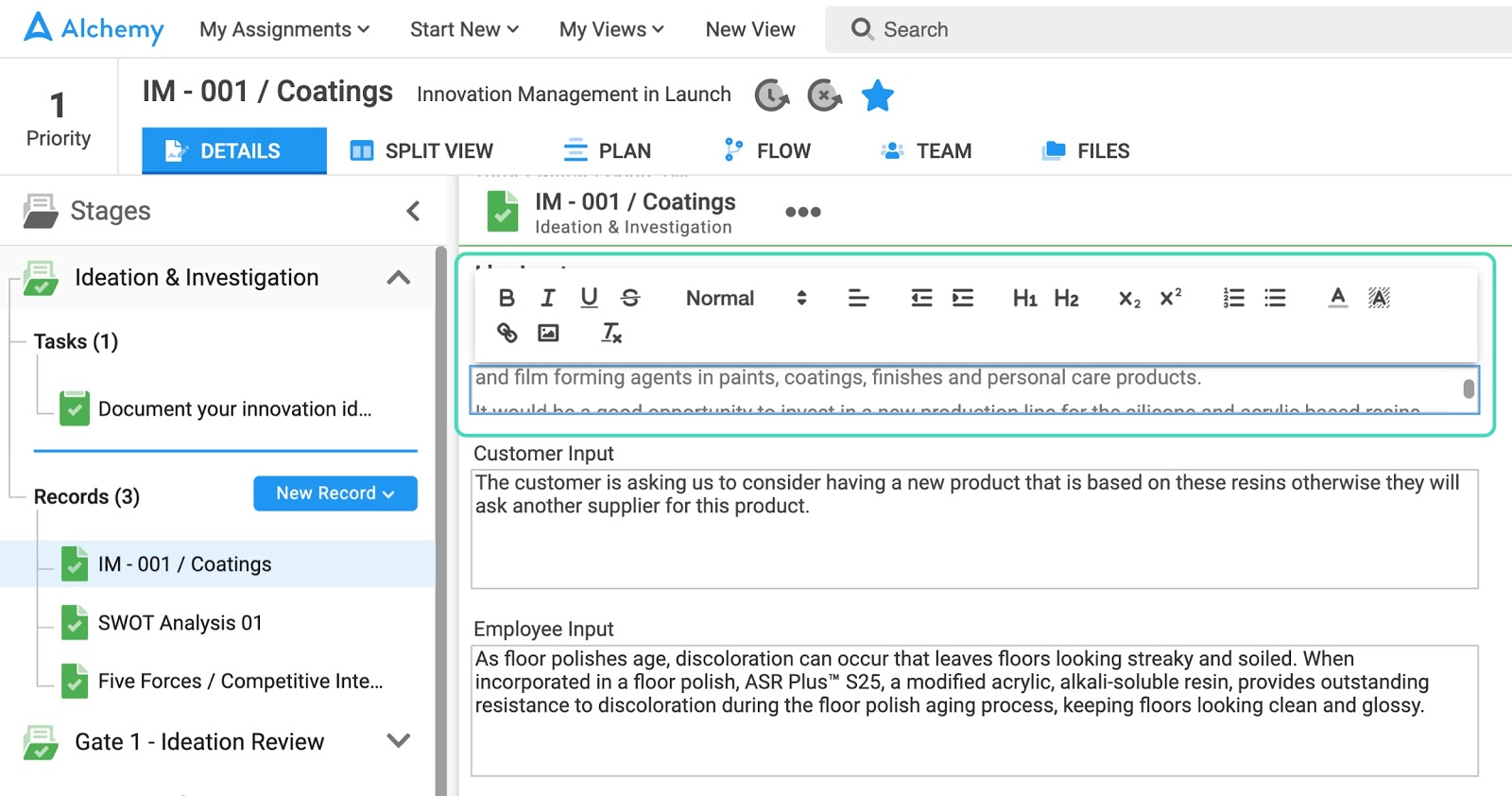
In the later image, the user can drag the bottom right corner down and resize the box to both display and print 100% of the content:
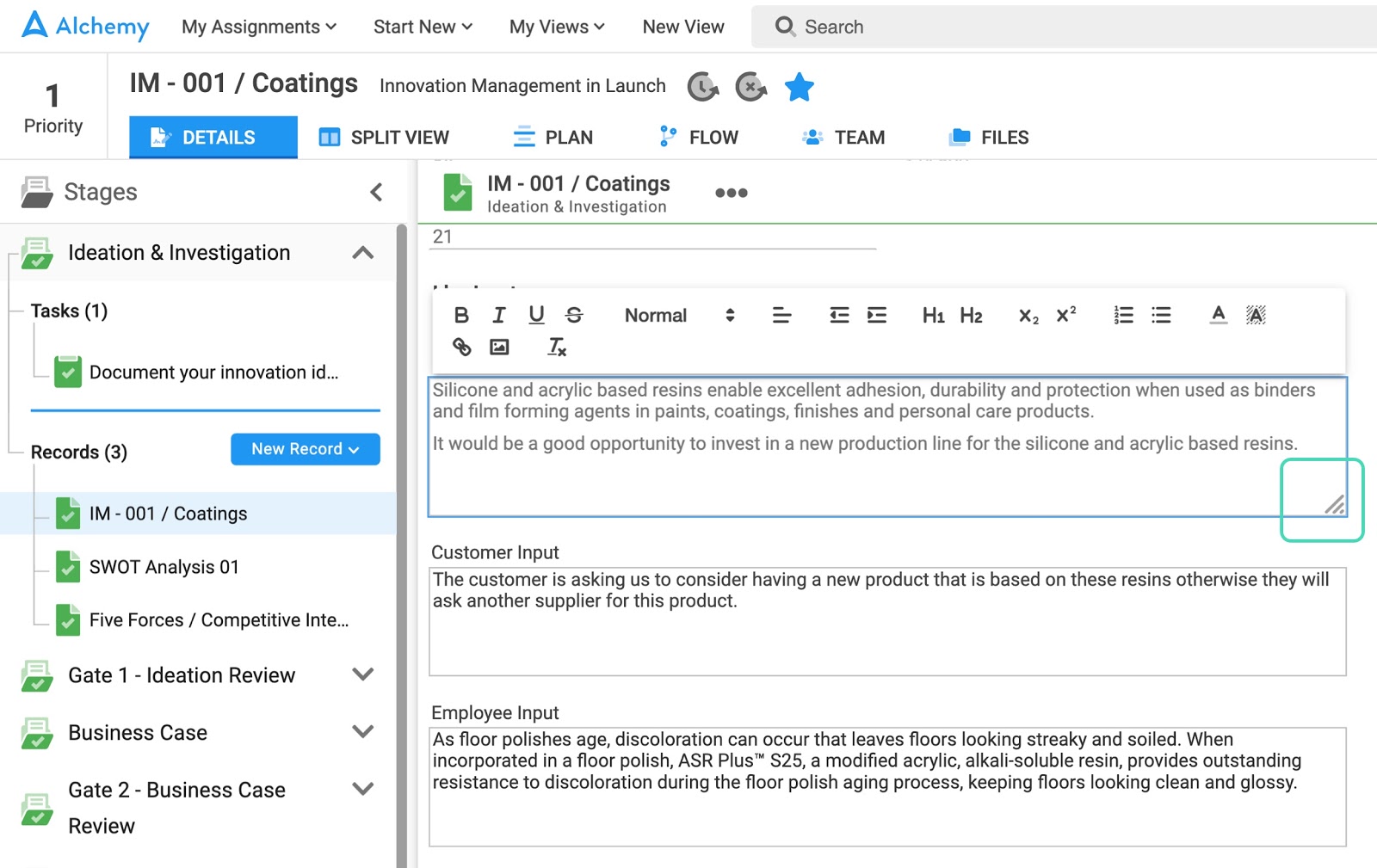
2. New Project Planning Labels
We changed the wording of two labels in Plan tab:
- From Stage Completion Target to Planned Stage Completion Date
- From Stage Target Duration to Planned Stage Duration
Key End User Benefits - We wanted to more clearly explain the difference between these two important project management inputs.
In the case of the Planned Stage Completion Date - this is the day and time the project owner expects a stage to end.
In the case of Planned Stage Duration - this is the length of elapsed time the project owner expects a stage to last.
The two inputs are highlighted in the turquoise box below:

As you plan your project, keep in mind that you could also have gaps between the end of one stage and the beginning of the next based on other work your staff may have, holidays, vacations, etc.
3. Links in Views
In all grid Views, users can now see and click on links in the sourced data (i.e., links to processes, records, and tasks).
Key End User Benefits
Now users can see and click on links in View tabs beyond the “source data” tab, specifically in grid mode. In this screenshot you can all Lab Work and Lab Work Request Forms by Customer now highlighted in blue as they are clickable links:

4. Filters in Views
Now in Views, once source data has been pulled, a user can filter (i.e., either include or opt not to include) all the results based on filters that can be checked.
Key End User Benefits
Being able to filter helps users zero in on the exact dataset they want to analyze at a more granular level. In the screenshot below, notice the turquoise boxes on the right side of the Views page. The small one around “Filters” will pop out all relevant filters for each of the types of information in your source data. In this case, “Name” was selected and the user can select all or a subset of the Request form records.
